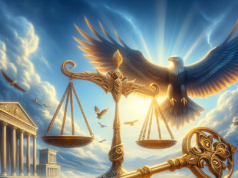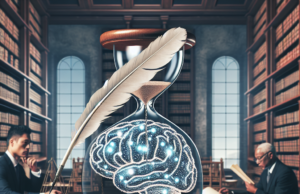Table of Contents
- 0.1 Article 1
- 0.2 Article 2
- 0.3 Article 3
- 0.4 Article 4
- 0.5 Article 5
- 0.6 Article 6
- 0.7 Article 7
- 0.8 Conclusion
- 1 Understanding the Articles of the United States Constitution
- 2 Who Wrote the Articles of the Constitution?
- 3 When Were the Articles of the Constitution Ratified?
- 4 What are the Articles of Articles of The Constitution?
- 5 Article 1 of the Constitution
- 6 Article 2 of the Constitution
- 7 Article 3 of the Constitution
- 8 Article 4 of the Constitution
- 9 Article 5 of the Constitution
- 10 Article 6 of the Constitution
- 11 Article 7 of the Constitution

Article 1
Article I of the United States Constitution establishes the legislative branch of the federal government. The branch, composed of the House of Representatives and Senate, is responsible for making laws.
Section 1 of Article I states that all legislative powers shall be vested in the Congress of the United States, which shall consist of a Senate and House of Representatives. Section 2 outlines the requirements for becoming a member of the House, including being at least 25 years old, a citizen for at least 7 years, and a resident of the state being represented. Section 3 outlines the requirements for becoming a senator, including being at least 30 years old, a citizen for at least 9 years, and a resident of the state being represented.
Sections 4 and 5 establish the procedures for holding elections, and organizing and conducting the activities of Congress. Furthermore, Section 6 grants members of Congress immunity for anything they say during a session of Congress. “They shall in all Cases, except Treason, Felony and Breach of the Peace, be privileged from Arrest during their Attendance at the Session of their respective Houses, and in going to and returning from the same.”
Section 7 outlines the process for passing bills and laws, including the requirement that all bills raising revenue must originate in the House of Representatives. Section 8 outlines the powers of Congress, which include declaring war, regulating commerce, providing for the common defense, and establishing immigration policy.
Sections 9 and 10 outline the things that Congress is prohibited from doing, such as passing bills of attainder or ex post facto laws, and entering into treaties without the consent of the President.
In summary, Article I of the Constitution establishes the legislative branch of the federal government and outlines the procedures and requirements for becoming a member of Congress. It also sets out the powers of Congress and the things that it is prohibited from doing.
Article 2
Article II of the Constitution establishes the executive branch of the federal government. The branch is responsible for enforcing laws and executing the directives of Congress and the President.
Section 1 of Article II outlines the requirements for becoming President, including being a natural-born citizen, at least 35 years old, and a resident of the United States for at least 14 years. It also establishes the Electoral College as the method for electing the President.
Sections 2 and 3 detail the powers of the President, which include serving as commander-in-chief of the military, granting pardons, and making appointments. Section 4 outlines the process for removing the President from office through impeachment.
In summary, Article II of the Constitution establishes the executive branch of the federal government and outlines the requirements for becoming President. It also sets out the powers of the President and the process for removing the President from office.
Article 3
Article III of the Constitution establishes the judicial branch of the federal government. The branch is responsible for interpreting and implementing the laws passed by Congress and the executive orders issued by the President.
Section 1 of Article III establishes the Supreme Court and gives Congress the power to establish inferior courts. Sections 2 and 3 describe the types of cases that the federal courts have jurisdiction over and outline the rights of the accused in criminal cases.
In summary, Article III of the Constitution establishes the judicial branch of the federal government and outlines the types of cases that the federal courts have jurisdiction over.
Article 4
Article IV of the Constitution details the relationship between the states and the federal government. It says that “Full Faith and Credit shall be given in each State to the public Acts, Records, and judicial Proceedings of every other State.” This means that the legal decisions made in one state should be honored in every other state. It also requires that the federal government ensure that every state is provided a republican form of government.
Section 2 outlines the privileges and immunities that each state is granted, including the right to travel freely and be protected from discrimination. Section 3 establishes the process for admitting new states to the union.
In summary, Article IV of the Constitution outlines the relationship between the states and the federal government and sets out the rights and privileges that are granted to each state.
Article 5
Article V of the Constitution outlines the process for amending the Constitution. It states that amendments may be proposed by either Congress or a national convention called by Congress. A proposed amendment must be ratified by three-quarters of the states in order to become law.
In summary, Article V of the Constitution outlines the process for amending the Constitution and establishing new laws.
Article 6
Article VI of the Constitution establishes the supremacy of federal law over state law. It also requires all federal and state officials to swear an oath of allegiance to the Constitution.
“In full faith and credit” of Article IV means that the courts of one state must honor the decisions and judgments of other states’ courts. The Constitution specifies that, “Full Faith and Credit shall be given in each State to the public Acts, Records, and judicial Proceedings of every other State.”
In summary, Article VI of the Constitution establishes the supremacy of federal law over state law and requires all federal and state officials to swear an oath of allegiance to the Constitution.
Article 7
Article VII of the Constitution establishes the process for ratifying the Constitution. It required the approval of nine states in order to become law.
In summary, Article VII of the Constitution establishes the process for ratifying the Constitution.
Conclusion
The Constitution was created to establish a system of government that would protect individual liberties and guarantee the basic rights of all citizens. Each of the articles in the Constitution was designed to outline the responsibilities of each branch of the government and to create a framework for the functioning of a democratic republic. By setting out the responsibilities of each branch, the Constitution ensures that no single branch becomes too powerful and that the government remains accountable to the people.
Understanding the Articles of the United States Constitution
The United States Constitution is the supreme law of the United States. The Constitution is made of the Preamble and seven different articles. Together, these articles are the foundation for how the United States government is organized. The Articles of the Constitution also explain how the federal government interacts with the citizens, states, and people of the country.
Who Wrote the Articles of the Constitution?
The Constitution and all of its Articles were written in 1787. Between May 1787 and September 1787, the group of men now known as the Framers met to talk about what should be included in the Articles of the United States Constitution. Because the current government under the Articles of Confederation did not work well, the framers hoped to create a better government. There were 55 Framers of the United States Constitution, included George Washington, James Madison, Ben Franklin, Alexander Hamilton, and more. The Framers had many arguments and debates about what should be included in the Articles. They also made many speeches. After a lot of talking, they finally decided on all the details of the Constitution.
When Were the Articles of the Constitution Ratified?
The Constitution had to be ratified by at least nine states in order to become the law of the land. After two and a half years, all 13 states agreed to ratify the Articles of the Constitution. The Constitution and its Articles were adopted into the United States on September 17, 1787, during the Constitutional Convention in Philadelphia.
What are the Articles of Articles of The Constitution?
Together, the articles of the constitution work to establish the branches of the federal government and describe what powers they have.
Article 1 of the Constitution
Article 1 gives Congress its powers and limits. Congress is the branch of the government who can make laws for the country. Article 1 also creates the two sections of Congress, the Senate and the House of Representatives.
Article 2 of the Constitution
Article 2 of the Constitution makes the executive branch of the government. The Executive branch has the responsibility and authority for the administration on a daily basis. In the United States, the executive branch is made up of the President and executive officers.
Article 3 of the Constitution
Article 3 of the Constitution creates a judicial branch in the United States. The Judicial branch is the court system that interprets the law. In the United States, the judicial branch includes the Supreme Court and the lower courts which are made by Congress.
Article 4 of the Constitution
Article 4 of the Constitution talks about the states. Article 4 talks about what responsibilities and duties the states have along with what responsibilities the federal government has to each state.
Article 5 of the Constitution
Article 5 says that the only way the Constitution can be changed is by adding an amendment.
Article 6 of the Constitution
Article 6 says that any debts or engagements that the country had before adopting the Constitution are still valid. Article 6 also says that the Constitution is the highest law and that all officers and judges have to uphold the Constitution.
Article 7 of the Constitution
Article 7 of the U.S. Constitution is the final article of the Constitution. This article explains how many states need to ratify the Constitution.






















